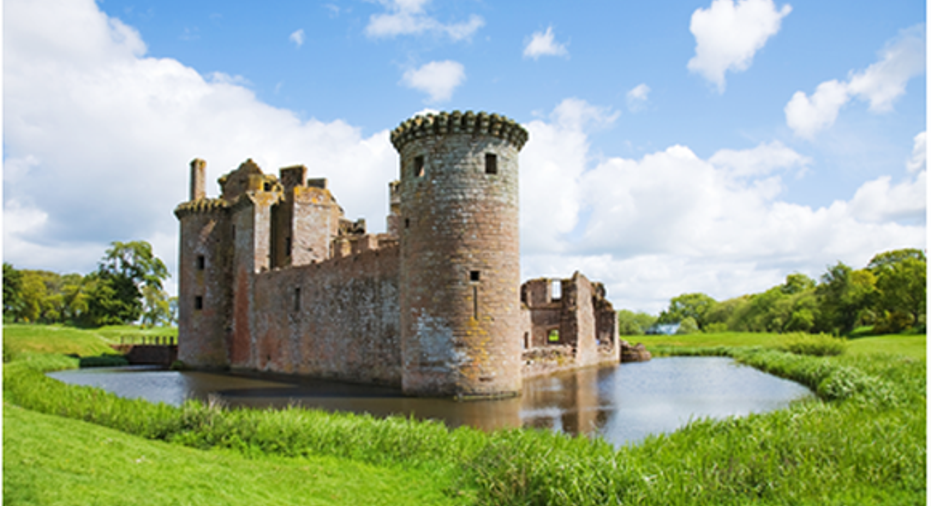5 U.S. Banks With Wide Moats

Image source: Getty via iStock/Thinkstock.
"In business, I look for economic castles protected by unbreachable moats," Warren Buffett has said in the past.
He doesn't mean this literally. Last I checked, no company that I know of is actually surrounded by an alligator-infested trench filled with water. What the 86-year-old Chairman and CEO of Berkshire Hathaway (NYSE: BRK-A) (NYSE: BRK-B) is referring to instead is that he prefers companies with business models that are insulated from competition.
"A truly great business must have an enduring 'moat' that protects excellent returns on invested capital," he wrote in his 2007 shareholder letter. "The dynamics of capitalism guarantee that competitors will repeatedly assault any business 'castle' that is earning high returns."
Buffett's favorite type of moat is a large cost advantage, which is the case with GEICO, Berkshire Hathaway's auto insurance subsidiary. This allows a company to underprice its competitors and thus attract more business while at the same time earning wider profit margins. A win-win situation if I've ever seen one.
But there's another kind of moat that's just as powerful, if not more so: a company's brand. Coca-Cola serves as a case in point. For all intents and purposes, there's no difference between a can of Coke and a can of generic cola. Both are just mixtures of sugar, water, and artificial flavors. Yet a can of Coke costs significantly more because of its brand. It's no coincidence in this regard that Coca-Cola is a major Berkshire Hathaway stockholding.
The same lesson is true in other industries as well. Take the following list of banks, which were recently found by BrandFinance, an independent branded business valuation and strategy consultancy, to have the most valuable brands in the domestic bank industry:
|
Bank |
Brand Value |
|---|---|
|
Wells Fargo (NYSE: WFC) |
$42.6 billion |
|
Chase -- the commercial banking operations of JPMorgan Chase (NYSE: JPM) |
$33.7 billion |
|
Bank of America (NYSE: BAC) |
$30.3 billion |
|
Citigroup (NYSE: C) |
$27.7 billion |
|
JPMorgan the investment banking operations of JPMorgan Chase |
$15.7 billion |
Data source: BrandFinance's Global 500.
No doubt you've heard of all these banks. But what you may not know is that these brand names don't actually coincide with the underlying institutions. In Wells Fargo's case, for instance, the underlying corporate structure is that of Norwest Bank. The two banks merged in 1998, with Norwest's executives taking the helm but retaining the Wells Fargo brand name.
The same is true of Chase, which merged with Chemical Bank in 1995 to create the then-biggest bank in the country. "The combined bank would take the better-known Chase name, though Chemical is much bigger than Chase and is the dominant partner in the merger,"reported The New York Times when the deal was announced. "Walter V. Shipley, the chairman and chief executive of Chemical, will keep those titles at the new company."
A decade later, Chase merged its commercial banking operations with JPMorgan's investment bank, creating the JPMorgan Chase you know today, though it subsequently went on to purchase Bank One, Bear Stearns, and Washington Mutual as well.
And it's the same story yet again with Bank of America, which was taken over by NationsBank in a 1998 merger creating the first nationwide branch network. While the executives at NationsBank took control of the combined institution and retained its headquarters in NationsBank's hometown of Charlotte, North Carolina, it wisely kept the Bank of America brand name.
Indeed, Citigroup is the only bank to still operate under its original corporate identity, though it's slightly altered its name over the years from City Bank of New York to National City Bank to Citibank to Citigroup.
What all of this goes to show is that, just like Buffett claims, brand names really do matter. And they matter as much for banks as they do for a can of coke.
10 stocks we like better than Bank of America When investing geniuses David and Tom Gardner have a stock tip, it can pay to listen. After all, the newsletter they have run for over a decade, Motley Fool Stock Advisor, has tripled the market.*
David and Tom just revealed what they believe are the 10 best stocks for investors to buy right now... and Bank of America wasn't one of them! That's right -- they think these 10 stocks are even better buys.
Click here to learn about these picks!
*Stock Advisor returns as of January 4, 2017
John Maxfield owns shares of Bank of America and Wells Fargo. The Motley Fool recommends Coca-Cola. The Motley Fool has a disclosure policy.